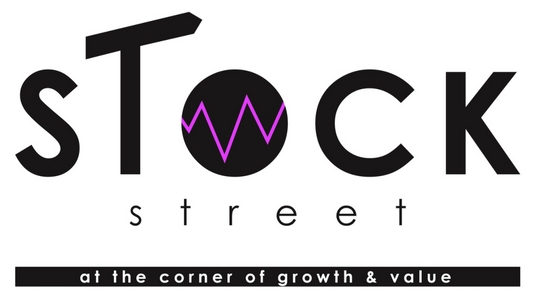Whether you’re an avid Snapchat user or your kids are avid Snapchat users, there is a good possibility you’re familiar with Snapchat’s impressive run over the past few years. The company was only founded seven years ago and has already gone public in an attempted to take on the goliath Facebook.
While Snapchat is battling it out with Facebook’s Instagram, it has been a tough fight to win, since Instagram has been able to replicate much of what Snap does.
The question is, as Snap battles it out with Facebook, how does it make money?
You are likely searching for the answer to one of two questions.
- How does Snapchat generate revenue?
- How does Snapchat make a profit?
These two questions are not inclusive, and, hence, they have two completely different answers.
This article will answer both of those questions, so read on to learn about how Snapchat makes money.
About Snapchat Stock and Demographics
Snapchat went public in 2017 via its initial public offering (IPO). The company launched onto the stock market priced at $17 per share, quickly running up to $27 per share on the company’s first-day trading.
Today, Snap is down significantly from its IPO launch date, trading around $11 per share as of when this (see updated chart below).
SNAP has a favorable demographic for advertisers, with the majority of its daily active users falling between the age of 13 – 24. With over 150 million daily active users, the app is popular and has the potential to generate a lot of revenue.
How Snapchat generates Revenue
Snapchat’s revenue is overwhelmingly skewed towards advertising.
SNAP had 188 million daily active users in the second quarter of 2018. During 2017, Snap had a total of over 700 million daily active users on their platform.
Companies pay Snapchat to place ads throughout its platform, which has 60% of its users between the ages of 13 – 24.
The following is taken from Snapchat’s quarterly financial statement:
We generate substantially all of our revenue through the sale of our advertising products, which include Snap Ads and Sponsored Creative Tools, and measurement services, referred to as advertising revenue. We sell advertising directly to advertisers, referred to as Snap-sold revenue. Certain partners that provide content on Snapchat, or content partners, also sell directly to advertisers, referred to as partner-sold revenue. We report Snap-sold revenue on a gross basis and partner-sold revenue on a net basis. Currently, our Sponsored Creative Tools, which include Sponsored Lenses and Sponsored Geofilters, and our measurement services are only Snap-sold.
Source 10Q
What does this tell us?
Snapchat has a few services they utilize to generate revenue, nearly all of which fall under the advertising category.
These include:
- Snap-sold revenue
- Snap Ads and Sponsored Creative Tools
- Measurement services
- Sponsored creative tools
- Sponsored lenses
- Sponsored geofilters
- Partner sold revenue
While there are two categories of revenue generated by Snap, the snap-sold revenue is by far the highest portion. In 2017, the Snap sold revenue was 94% of the revenue, and the Partner sold revenue was only 6%. (Source 10Q)
It would seem that he answer to how Snap generates revenues, is overwhelmingly through the sale of Snap-sold advertising.
How does Snapchat make a profit?
If you’re wondering how Snapchat makes a profit, you may be surprised to find out…
They don’t.
Not only does Snapchat not make a profit – the company loses A LOT of money.
In 2017 alone, Snapchat incurred a loss of over $3.4 billion.
If you’re new to the business model of tech startups, you may find this crazy. If you’re an avid study of Silicon Valley, you may not find this abnormal.
The fact is, Snapchat went public to raise money because money is needed to expand their market share. If Snapchat expands their share of the market, they can increase their revenue from advertising. This is the model of tech companies – operate at a loss until you win the necessary share of the market. Once the company wins the battle, they can reduce expenses, and, hopefully, generate a profit.
It’s possible that Snapchat does not succeed and could end its run in bankruptcy. Or, more likely, Facebook or another large conglomerate would buy it at a discount as a bolt-on to their current business.
How do the Snapchat losses break down?
In the most recent quarterly statement, Snapchhat shows the following:
- Revenue = $262,263,000
- Costs and expenses
- Cost of Revenue = $191,656,000
- Research and development = $203,246,000
- Sales and marketing = $101,685,000
- General and administrative = $123,609,000
- Total costs and expenses = ($620,105,000)
- Loss from operations = ($357,842,000)
- Loss after income tax, interest, and other = ($353,310,000)
- Loss per share (basic and diluted) = (0.27)f
Source 10Q
Snapchat was able to generate over $260 million of revenue in the second quarter of 2018. However, the expenses incurred by Snapchat added up to over $620 million.
While Snapchat has been able to monetize their platform via ads, it has not been able to generate a profit due to excessively high expenses.
Conclusion – How does Snapchat make money?
Snapchat has been able to monetize thanks to the use of advertising. In 2017, Snapchat generated over $820 million in revenue, but the company incurred expense much higher.
At Snapchat’s current juncture it does not make a profit, and in the second quarter of 2018, the company incurred a loss of over $350 million.
Whether Snapchat makes it or not is to be seen. Snap may discover new revenue streams or make new acquisitions to grow their market share and revenue. It may be able to increase its ad sale per user, and it may even be able to increase its daily active users.
In the end, if the company does not succeed in increasing its revenue, or drastically cut its expenses, it may not last very long while losing over a billion dollars annually.
Disclaimer: These are the ideas and opinions of the author. The author is not responsible for the actions of those who read the posts on this blog. Each individual reader has a unique situation and unique needs. This blog is not intended to solve those unique situations of the readers. This blog is not liable for decisions made by the readers of this blog.
















This post was really useful, thanks for sharing.